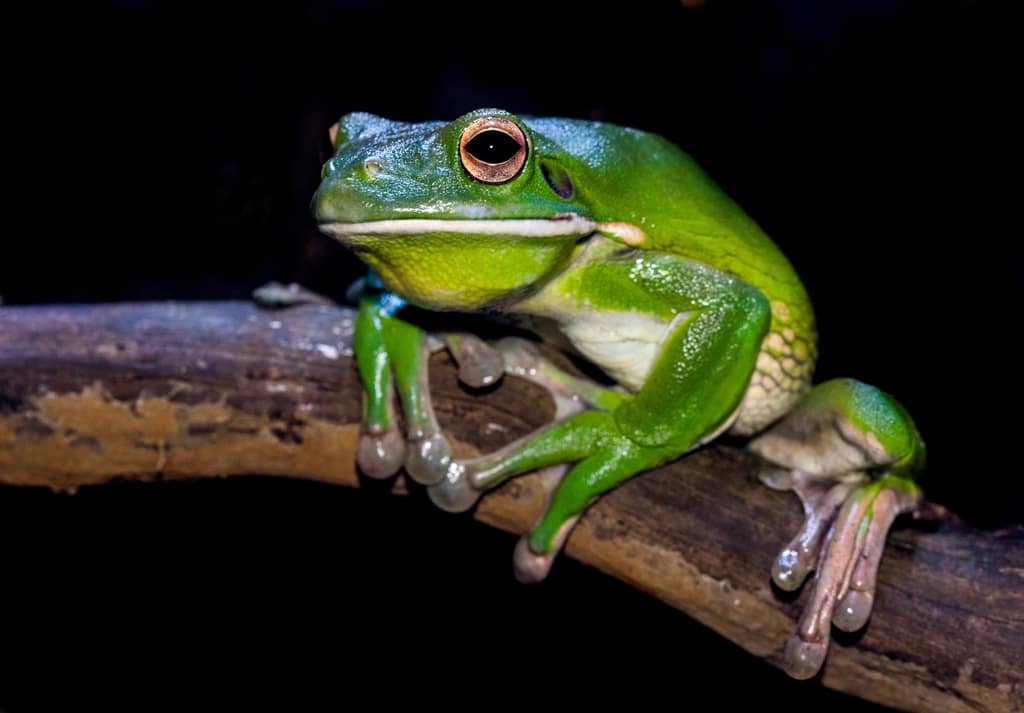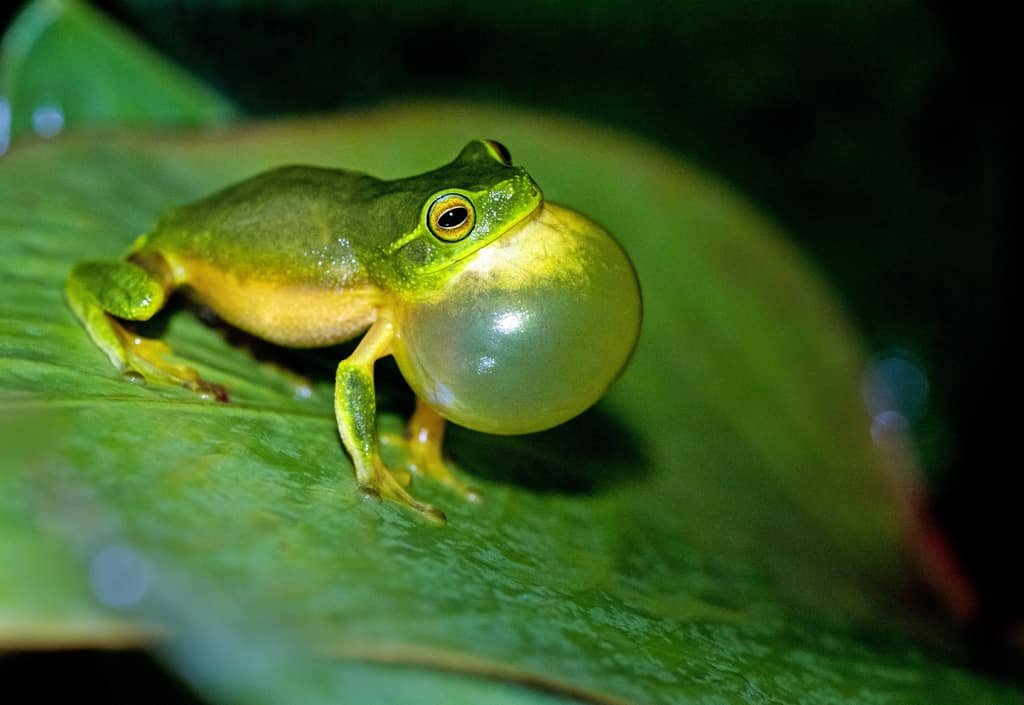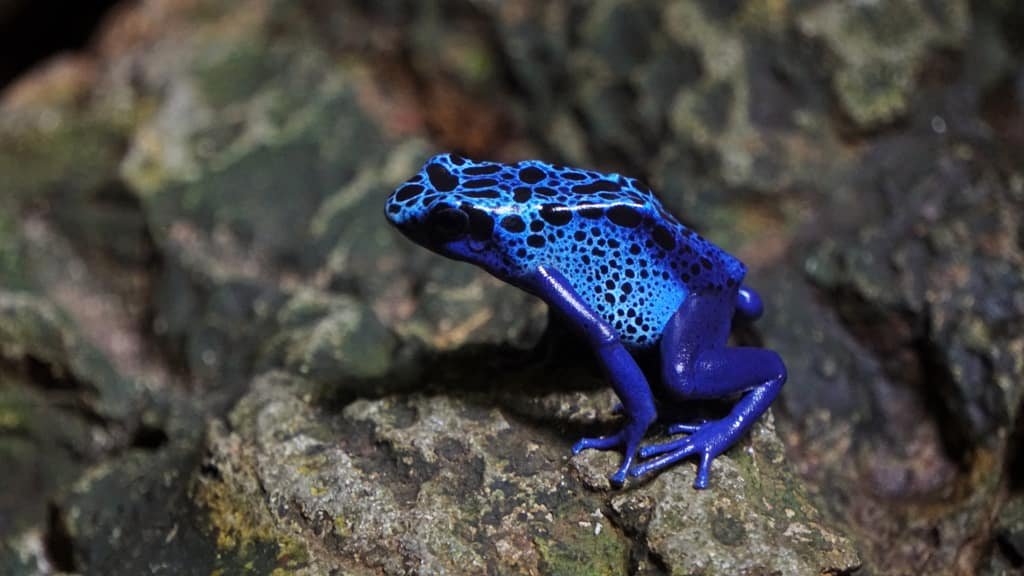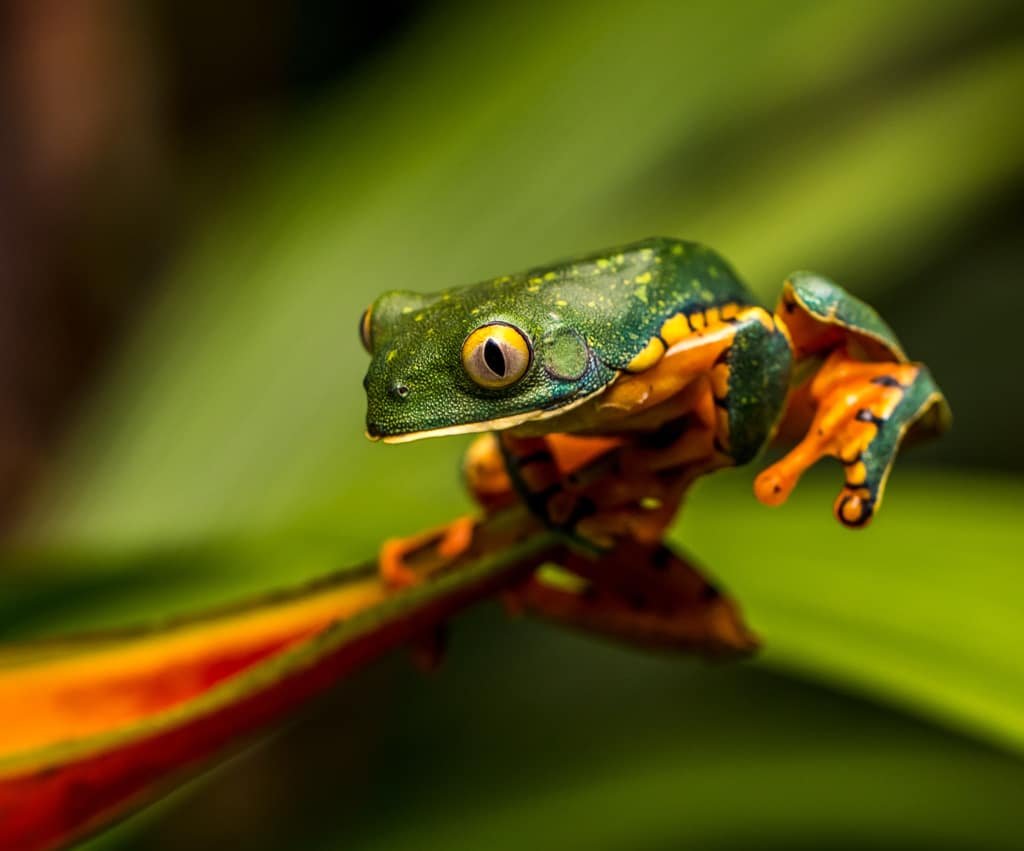FFrogs belong to the Anura order of amphibians. There are 22 different families of frogs and toads in the Anura order. Frogs usually have smooth, moist skin, whereas toads usually have dry, watery skin. Toads spend more time on land than frogs, who spend most of their lives in or near water. Amphibian means double lives: Frogs and toads have two parts of their lives: they live on land and live on the water. The life of a frog begins in the water when it hatches from an egg as a tadpole. A tadpole looks different than an adult frog. A tadpole has no limbs and breathes through its gills. So here are 25 Interesting facts about Frogs that will amaze you.
- There are about 4,810 species of frogs in the world.
- The world’s largest living frog is the goliath bullfrog or also known as the giant slippery frog. They can grow up to 32 cm (13 inches) and can weigh anywhere around 3.25 kilograms.
- Chthyostega is the prehistoric predecessor to the frog we see today. It lived around 370 million years ago during the Devonian Period. Frogs are sometimes referred to as “the first four-legged fish,” skeletal remains of this earliest-known amphibian was first discovered in the East Greenland.
- Frogs have a highly developed nervous system that consists of the brain, spinal cord, and nerves. Many parts of frog brains correspond with those of humans. It consists of two olfactory lobes, two cerebral hemispheres, a pineal body, two optic lobes, a cerebellum, and a medulla oblongata.
- A common frog’s lifespan is about 10-12 years if he gets an adequate amount of water.

- Frog’s eyes are so sensitive that their light detectors can even detect single photons of light.
- Most frogs lay eggs in freshwater, and the development of tadpoles happens outside the female body.
- In rainforests, male frogs send messages by drumming with their feet and are sole caretakers of the young ones. Male frogs protect the nests and carry their kids on their backs.
- Frogs have the ability to hear high frequencies than any other amphibians. They can listen to sounds anywhere around 38 kilohertz. Whereas humans can hear up to 20 kHz.
- Frogs have vocal cords, just like humans. They also have a vocal sac that works as an inflatable amplifier.

- The purple frog comes out for only two weeks and remains underground throughout the year. The only time they surface is during the monsoon season.
- Darwin’s male frog keeps its tadpoles in their vocal sac until the time they develop into frogs. When they grew as frogs, they cough them up.
- A species of frogs known as wood frogs can become frozen solid and then can be thawed and continue their lives. While they are in frozen states, they use glucose in their body to protect their vital organs.
- Frogs eat everything which moves according to their sizes. It could be spiders or insects.
- Most tadpoles are vegetarians, although some species are carnivorous.

- Ranidaphobia is a condition in which a person fears of frogs caused due to some negative past experience. Sufferers from Ranidaphobia experience undue anxiety about encountering frogs.
- Brazilian gold frogs are considered to be one of the smallest frogs on the planet, with the size of 8.6 – 10.2 mm (0.34–0.40 inches). Mostly they are of beautiful golden color as its name suggests.
- The poison arrow frogs or poison dart frogs are the most poisonous animals in the world. They are found in south and central America and are blue in color.
- A group of frogs is called anan “army of frogs.” Whereas the group of tadpoles is known as the “knot of toads.”
- Frogs don’t need to drink water as they absorb it through their skin.

- The species of Asian tree frogs build nests on trees over ponds and lakes. When tadpoles hatch, they drop directly into the water.
- They breathe through their nostrils while half of the air they need is absorbed by their skin.
- Frogs live on the land; however, they must be near ponds, swamps, or lakes. This is because if their skin gets dried, they will die.
- Frogs cant is seen vomiting. But whenever a frog has to vomit, it vomits its entire stomach.
- Tadpoles or frogs won’t give you warts (skin rashes), but someone who has warts can.






